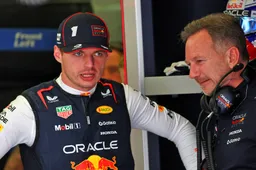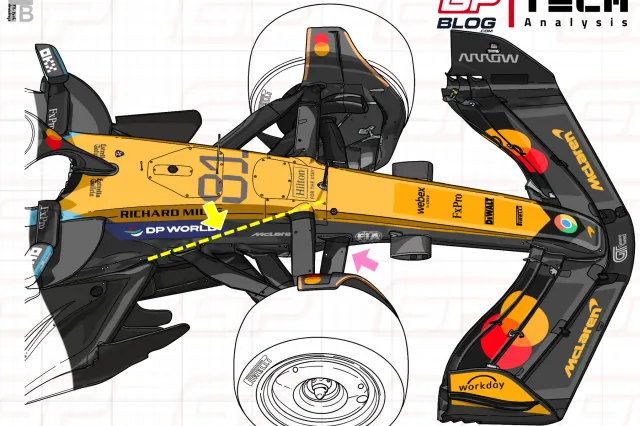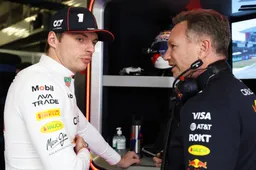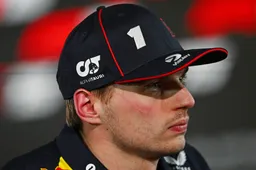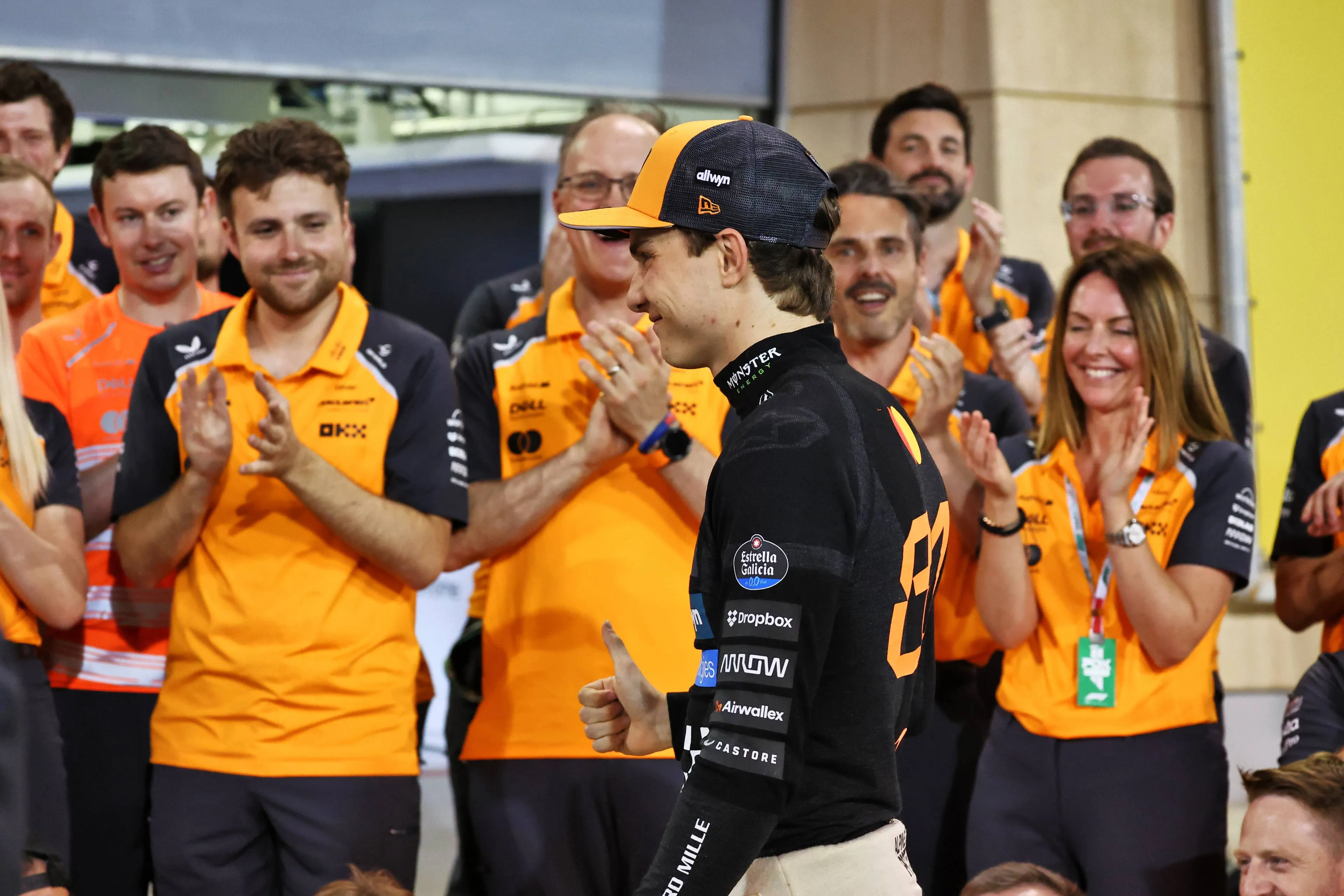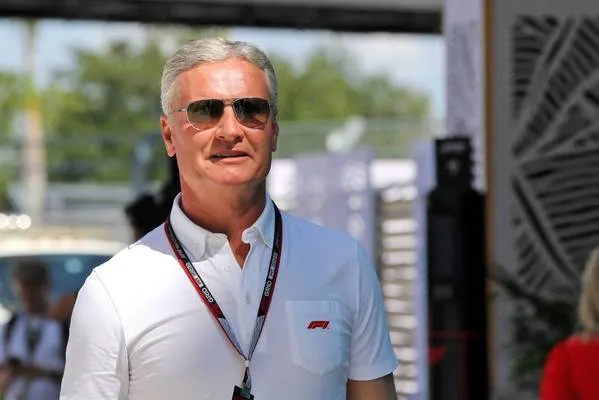The Bahrain Grand Prix weekend showed off McLaren’s real potential on a harsher circuit for tyres. Despite the very close gaps in qualifying, Piastri managed to grab pole position and went on to dominate the race on Sunday, with a clear advantage in tyre management over competitors. The MCL39 looked the strongest in all conditions, but with a bigger gap when temperature was hotter. Why did this happen? Let’s try to find it out.
McLaren running a soft mechanical set-up
For the whole weekend, McLaren proved to have the quickest car, but with a variable gap depending on the conditions and temperature of the asphalt: with a hot tarmac, the MCL39 proved to be the quickest by quite a comfortable margin (around 0.8 seconds ahead of Leclerc in FP3), being the only car to make the soft tyre last for the whole lap, without overheating it in the last sector. All other teams massively struggled with overheating, as the rear tyres temperature popped up in the first half of the lap, making it impossible for drivers to keep it on track though the last few corners.
Their advantage reduced during night sessions: in fact, as temperature decreased by about 10 °C, the tarmac wasn’t so aggressive on the rear tyres and thus the grip increased. This allowed other teams to exploit the grip offered by the soft tyre, making it last for the whole qualifying lap (thanks to the cooler conditions) without issues.
Despite track evolution and the cooler conditions during qualifying and the race, McLaren proved to be the quickest by far, especially in terms of race pace configuration. Their advantage this weekend came from two strictly related set-up choices:
- the first one was to adopt a softer set-up in terms of suspension system;
- the second was to favour a higher downforce configuration.
For what concerns the first aspect, in fact, McLaren have made a huge step forward in terms of understanding and exploiting the interaction between tyre and asphalt during the winter. In general, in fact, all the decisions on the mechanical level are made to improve the car’s grip, which is generated by the friction between the tyre and the asphalt. One fundamental parameter to evaluate the roughness of the track’s asphalt is called micro and, to give an example, a high micro would be sand paper (orange triangles in the image below). The micro is a parameter that has the most influence on generating temperature at the tyre surface and makes the tyre attaching to the road, thanks to the heat generated.
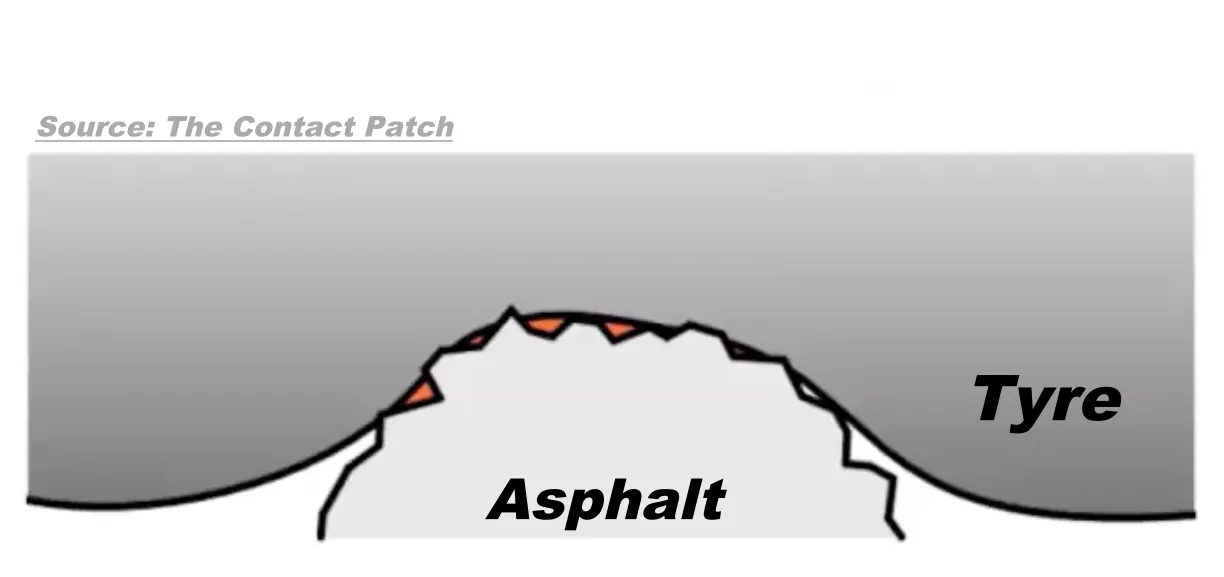
This micro parameter inevitably establishes the temperature at the tire surface, affecting grip as a consequence. From McLaren’s point of view, engineers have probably found a very good window where the tyres work very well with a high micro, thus generating a high grip on rough surfaces (like Bahrain).
All this was made possible by the innovative front suspension design, which is particularly helpful not only from the aerodynamical point of view but also from the mechanical, increasing the grip on the front axle and stabilising the aerodynamic platform at different heights (find a deeper analysis is available).
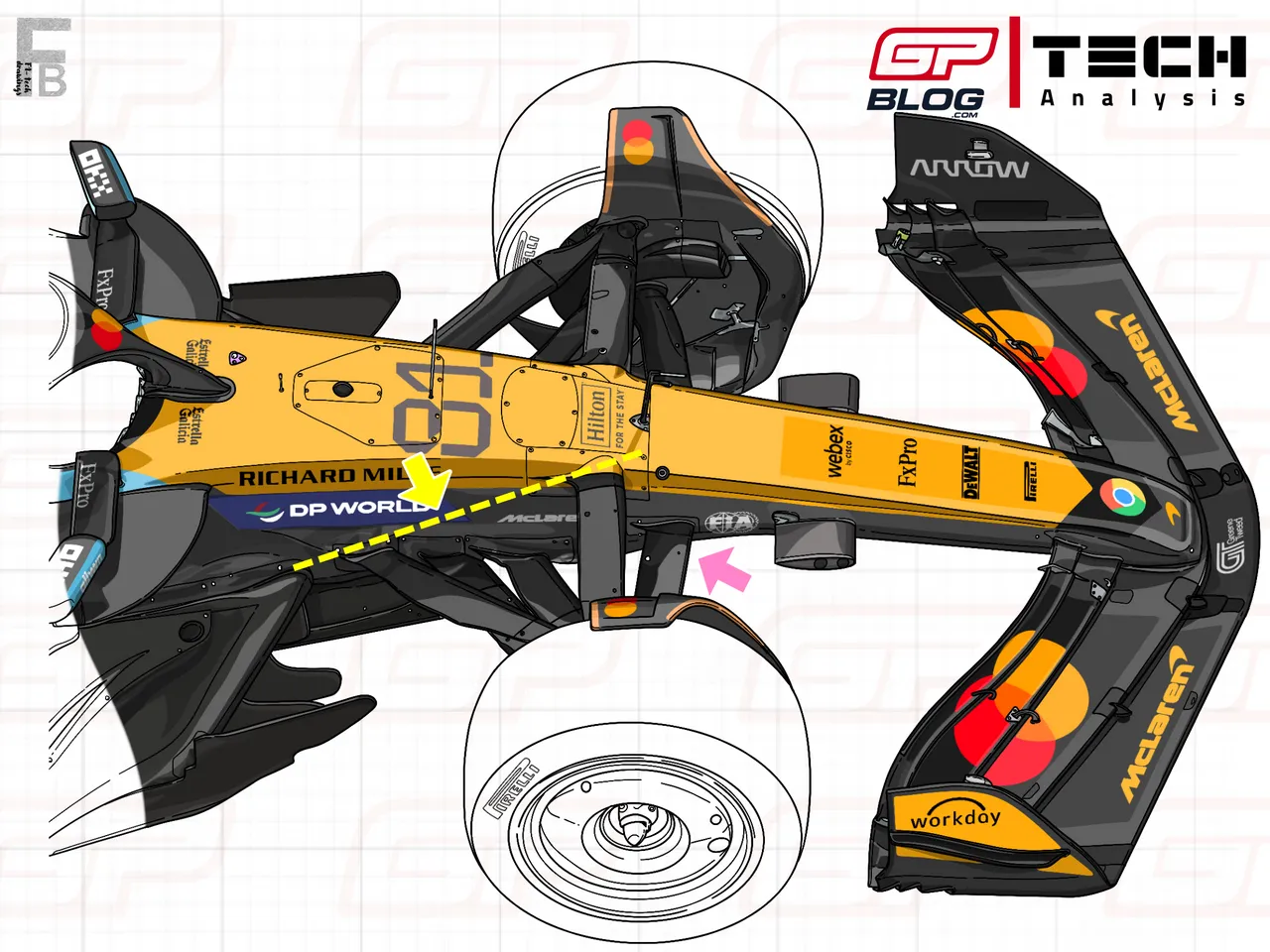
This big step forward made on the mechanical side of the car was praised by Team Principal Stella after the race on Sunday: “We made some technical investments in improving the design of the car in relation to tyre interaction.”
Thanks to the suspension design, in fact, the MCL39 can run at lower ride heights and with a way softer mechanical set-up. This inevitably gives them an advantage in almost all conditions and on different asphalts: the soft mechanical set-up allows the MCL39 to be extremely quick in the slow speed and in traction phases.
On the other hand, the very low ride height is an advantage in all those high-speed sections: thanks to the proximity to the ground, the Venturi channels generate a lot of suction, thus producing a lot of “efficient” downforce, i.e. load generated with a low drag level.
During the other three races during this season, it was evident how McLaren were the only team able to use softer set-up even on circuits like Suzuka, without losing performance in the high speed. This is a clear advantage over all rivals, who are forced to run these cars as stiff as possible to not be affected by proposing issues.
Soft mechanical set-ups also give an advantage in high temperature conditions, on particularly abrasive asphalts, or on those bumpy tracks where softer compound are used, in general in poor grip conditions.
Not by accident, in fact, we saw the biggest gap between McLaren and competitors in FP3 in Bahrain, where the hellish temperature make everyone struggle and during the race in Melbourne, when the intermediate tyre (which is made of a very soft compound to warm up also in cold conditions) started to degrade, with McLaren opening a huge gap to Verstappen in P3.
This aspect was underlined by Andrea Stella himself after qualifying, as he pointed out how their gap to competitors opened up in slippery conditions: “What's interesting here is that the more the track seems to be slippery, the more we seem to have an advantage. Normally this is a good characteristic to have. It means that the car has a good level of underlying downforce, based on my experience, and the less grip you have on the tarmac the more this kind of downforce becomes important.”
Read also
How a higher downforce set-up was helpful for tyre management
Moving on to the second set-up decision made by the Papaya engineers was to adopt a higher level of downforce than competitors in Bahrain: this high level of downforce, mainly generated by the bodywork of the car and by the Venturi channels, gave the MCL39 a huge advantage also in tyre management, both over the single lap and through the race distance. The car, in fact, was able to keep the tyres in its working window perfectly, allowing Piastri to complete 14 laps on the soft during the first stint on Sunday, while having a quicker pace than those on the medium behind.
As shown in the drawing below, in fact, the MCL39 sidepod and floor show a very similar design to the one adopted last season, but with a small variation to the floor edge (apart from the cooling inlet and mirror supports): as highlighted by the red arrows, in fact, the vortex generators have increased to a total of five, with an increasingly smaller size starting from the first (the front one) to the last. These small elements help push the front tyre turbulence outside, while generating small vortices to seal off the floor.
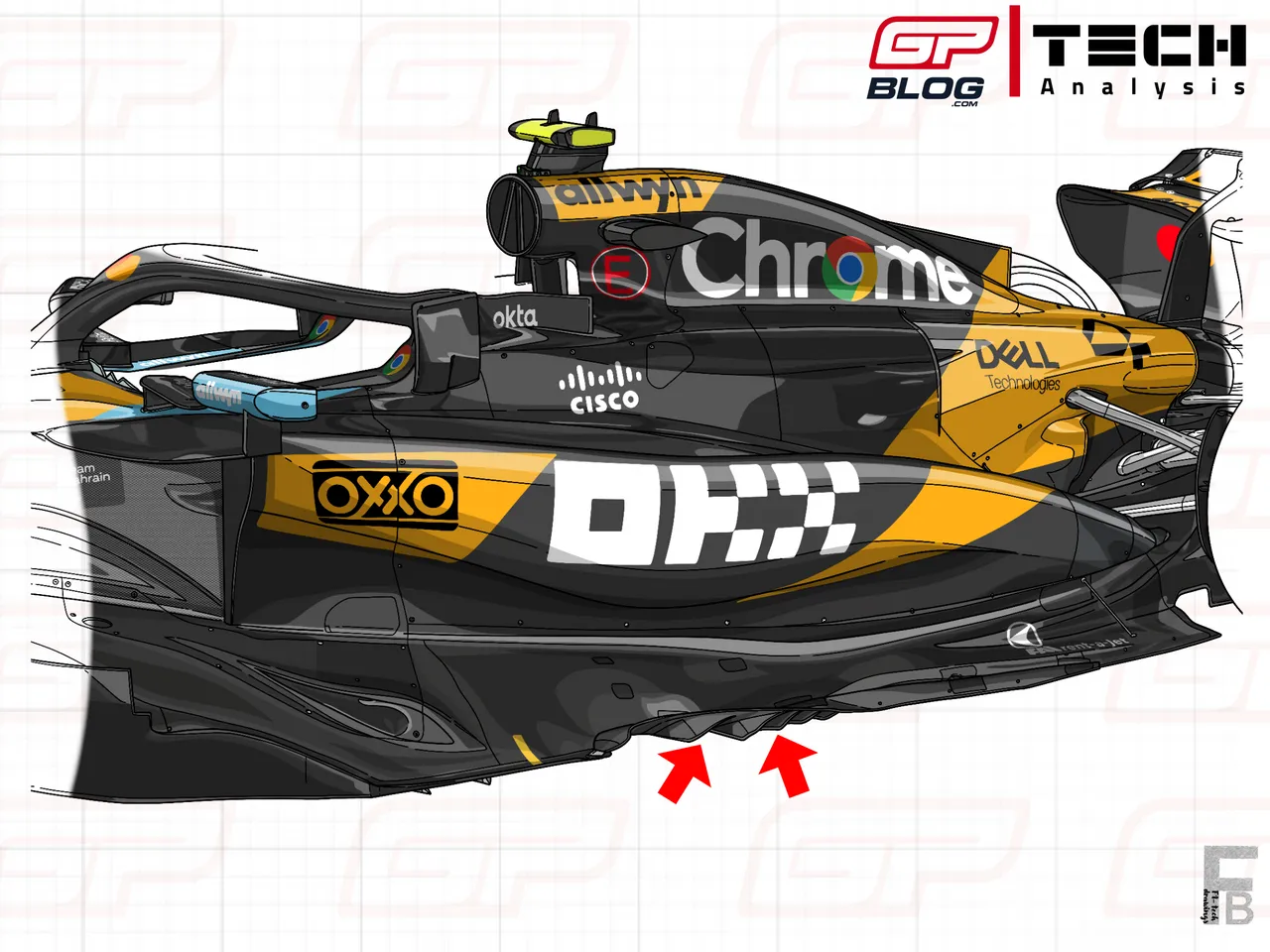
Despite these big advantages coming from the higher downforce set-up, the McLaren was the slowest car in the top speed trap for the whole weekend: as highlighted below, the team used a medium-high downforce rear wing (blue arrow) and a single element beam wing (pink arrow). This was made to limit the tyre wear on the rear axle, as additive downforce reduced rear sliding out of slow corners. This turned out to be a double-edge blade during the race: while Piastri could benefit from this more downforce for tyre management up front, Norris struggled a lot to pass Leclerc and eventually couldn’t pass Russell due to the small top speed delta.

These two set-up choices gave McLaren a big advantage during the last stint of the race on the medium tyre: thanks to the lower fuel load, the MCL39 could be much more aggressive on kerbs and quicker in medium speed and slow speed corners. This was particularly evident with both drivers, as both Norris and Piastri gained a huge amount of time on rivals in the middle sector for the whole race, especially as the tyre wear started to show off.
The next race in Jeddah could be a much difficult one for McLaren, due to the conditions that they’ll face: the Jeddah Corniche Circuit is basically made of straights and high speed corners, with only the latter one being an advantage for the Woking-based team. In fact, due to the layout, cars will need to run as stiff and as close to the ground as possible.
Secondly, being the surface very smooth, tyre wear will be very low: as already seen in Suzuka these conditions may reduce McLaren’s advantage, as there’ll be no need to manage tyres in the race. Last but not least, it’ll be the first time this year when proper low downforce set-ups will be adopted on all cars and thus it’ll be particularly interesting to see how they’ll behave on a very different configuration than the usual medium-downforce-adapted so far.
In conclusion, a very dominant McLaren was only display at the Bahrain GP, helped however by the conditions and the perfect set-up they adopted. It’ll be interesting to see how the scenario changes next week. Having said that, if McLaren dominates the race once again, then it’ll be even more difficult for rivals to catch up.
Popular on GPBlog

What Red Bull and Ferrari’s position says about the state of their 2026 PU
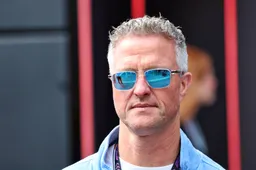
Ralf Schumacher expects Max Verstappen to leave and names shock team
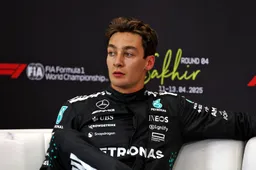
Brundle warns Russell he should be "worried" as Wolff 'won't want to let Verstappen slip again'
